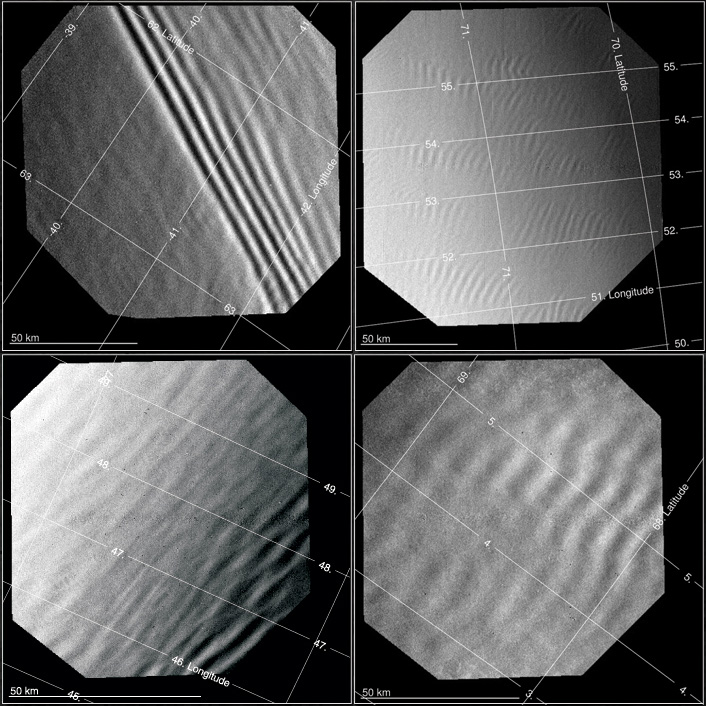How do we know that there are mountains on Venus? It is completely blanketed by high-level clouds and, at visible wavelengths, we cannot see its surface at all. Here is indirect proof for their existence.
Venus Express, European Space Agency’s interplanetary spacecraft made this set of images, published by ESA today. They show interesting looking regions of the Venerean clouds: they look like series of sea waves.
How do scientists explain these strange atmospheric wrinkles?

Venus is a world of contrasts. On the surface, the temperature reaches 450°C (723.15 K), hot enough to melt lead, while winds in the dense atmosphere blow at a sluggish 3-4 km/h. At the cloud tops, temperatures are a frigid -70°C (203.15 K), but wind speeds reach 300-400 km/h, much faster than hurricanes on Earth.
It might be expected, therefore, that there is little connection between the baking atmosphere close to the ground and the upper atmosphere, some 60-70 km above. However, spacecraft observations over several decades indicate that the relationship more resembles an ‘ocean-like’ lower atmosphere, topped by an opaque cloud layer which acts like the surface of the ocean. Ripples and air currents visible at the cloud tops provide hints about processes and influences far below.
Early evidence of atmospheric waves being generated by air flowing over major topographic features came in 1985, when two Soviet Vega balloons flying at an altitude of 54 km experienced a bumpy ride above the southern uplands of Aphrodite Terra.
Almost three decades later, observations made by instruments on board Venus Express provide new evidence that confirms the upward propagation of atmospheric waves from the surface to the main cloud deck and above.
These so-called gravity waves can only exist in a stably stratified atmosphere. They can be triggered, for example, by convection (the rise of lighter, warmer air) from below or by horizontal flow passing over an obstacle, such as a mountain. This is the same process that creates ripples on the surface of a river when it flows over a submerged boulder.
Photo: ESA/Venus Express/VMC/A. Piccialli et al., 2014
Read more about the gravity waves and the geographical features of Venus over at ESA’s site.
